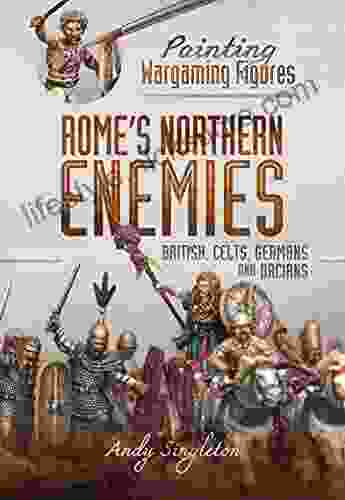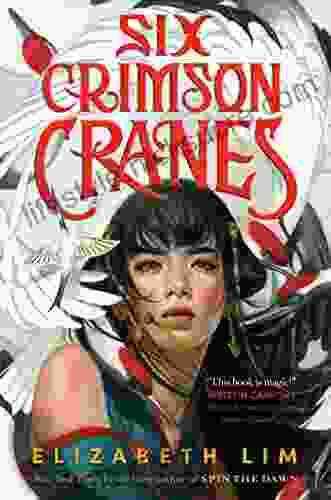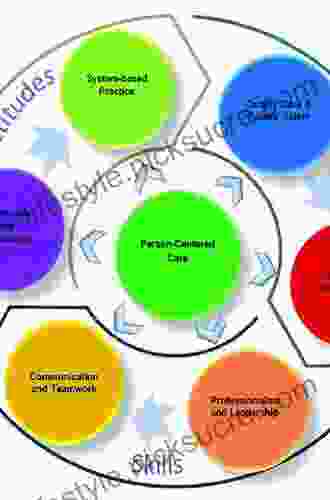Rome S Northern Enemies: British Celts Germans And Dacians (Painting Wargaming Figures)

:
Throughout its illustrious history, the Roman Republic and Empire faced zahlreichen adversaries. Among their most formidable foes were the tribes and nations dwelling to the north, beyond the protective shield of the Alps. These northern enemies posed a constant threat to Roman expansion and stability, forcing the legions into frequent and often bloody conflicts.
1. The Gauls: A Celtic Confederacy
Background: The Gauls were a Celtic people who inhabited a vast territory stretching from modern-day France to parts of Germany. They were divided into numerous tribes, each with its own customs and leaders.
Conflict with Rome: The Gauls first clashed with Rome in the 4th century BCE. In 390 BCE, a Gallic army led by Brennus sacked Rome, burning much of the city to the ground. Subsequent Gallic invasions continued to plague Rome for centuries.
Rome's Northern Enemies: British, Celts, Germans and Dacians (Painting Wargaming Figures)by Andy Singleton4.1 out of 5
Language : English File size : 21913 KB Print length : 144 pages Lending : Enabled Screen Reader : Supported Military Tactics: The Gauls were fierce warriors known for their courage and use of chariots. They employed a variety of weapons, including long swords, spears, and javelins. Their cavalry was particularly formidable, outnumbering and outmaneuvering Roman counterparts.
Legacy: The Gallic Wars, fought between 58 and 51 BCE, under Julius Caesar, brought about the conquest of Gaul and its incorporation into the Roman Empire. However, Gallic influence continued to shape Roman culture and politics.
### 2. The Germans: Tribal Federations
Background: The Germans were a diverse group of Germanic tribes inhabiting the regions north of the Rhine River and east of the Elbe River. They were divided into numerous confederations, each composed of several related tribes.
Conflict with Rome: The Germans first came into contact with Rome in the 2nd century BCE. Their incursions into Roman territory often tested Roman defenses. In 9 CE, a German coalition led by Arminius annihilated three Roman legions in the Battle of Teutoburg Forest.
Military Tactics: The Germans were skilled infantrymen known for their ferocity and use of heavy shields and spears. They often employed ambush tactics and excelled in forest warfare.
Legacy: The Germans remained a constant threat to Rome until the 5th century CE. Their invasions contributed to the decline and eventual collapse of the Western Roman Empire.
3. The Dacians: A Belligerent Kingdom
Background: The Dacians were a Thracian people who established a powerful kingdom in the Carpathian Mountains, in modern-day Romania. Their capital was the heavily fortified city of Sarmizegetusa.
Conflict with Rome: The Dacians first came into conflict with Rome in the 1st century BCE. Their king, Burebista, expanded the kingdom to its greatest extent, threatening Roman possessions in the Balkans.
Military Tactics: The Dacians were highly skilled warriors known for their use of cavalry, light infantry, and heavy siege machinery. They employed sophisticated defensive fortifications and used ambushes and guerilla tactics to frustrate Roman advances.
Legacy: The Dacians were defeated by the Roman emperor Trajan in two bloody wars between 101 and 106 CE. Dacia was incorporated into the Roman Empire as a province.
4. The Parthians: A Powerful Empire
Background: The Parthians were an Iranian people who established a vast empire stretching from Mesopotamia to Central Asia. Their capital was the city of Ctesiphon.
Conflict with Rome: The Parthians first clashed with Rome in the 1st century BCE. They were a formidable adversary, possessing a powerful army and a skilled cavalry force. In 53 BCE, the Parthians inflicted a crushing defeat on the Roman general Crassus at the Battle of Carrhae.
Military Tactics: The Parthians employed a unique military strategy known as the "Parthian shot." Their mounted archers would pretend to retreat, then turn and unleash a hail of arrows at their pursuers. This tactic proved devastating to Roman infantry formations.
Legacy: The Parthians remained a major threat to Rome until the 3rd century CE. They eventually ceded territory to the Roman Empire but continued to influence the politics and culture of the East.
5. The Sarmatians: Nomadic Horsemen
Background: The Sarmatians were a nomadic people of Iranian origin who inhabited the vast steppes north of the Black Sea. They were skilled horsemen and archers.
Conflict with Rome: The Sarmatians first came into contact with Rome in the 1st century BCE. They often raided Roman frontier territories and allied with other enemies of Rome, such as the Germans and the Parthians.
Military Tactics: The Sarmatians were formidable cavalrymen known for their speed and mobility. They used hit-and-run tactics to harass Roman forces and were skilled in archery from horseback.
Legacy: The Sarmatians continued to pose a threat to Rome until the 5th century CE. They eventually settled in the Balkans and Eastern Europe, influencing the development of local cultures.
:
The northern enemies of Rome were a diverse and persistent threat to the Republic and Empire. From the fierce Gauls to the nomadic Sarmatians, these tribes and nations tested Roman military might and resilience. Their conflicts shaped the course of Roman history, forcing the legions to adapt their tactics and strategies. Ultimately, the northern enemies contributed to the rise and fall of Rome, leaving an enduring legacy on the European landscape.
4.1 out of 5
| Language | : | English |
| File size | : | 21913 KB |
| Print length | : | 144 pages |
| Lending | : | Enabled |
| Screen Reader | : | Supported |
Do you want to contribute by writing guest posts on this blog?
Please contact us and send us a resume of previous articles that you have written.
 Fiction
Fiction Non Fiction
Non Fiction Romance
Romance Mystery
Mystery Thriller
Thriller SciFi
SciFi Fantasy
Fantasy Horror
Horror Biography
Biography Selfhelp
Selfhelp Business
Business History
History Classics
Classics Poetry
Poetry Childrens
Childrens Young Adult
Young Adult Educational
Educational Cooking
Cooking Travel
Travel Lifestyle
Lifestyle Spirituality
Spirituality Health
Health Fitness
Fitness Technology
Technology Science
Science Arts
Arts Crafts
Crafts DIY
DIY Gardening
Gardening Petcare
Petcare Anne Chambers
Anne Chambers Jan E Stets
Jan E Stets Summer Michaud Skog
Summer Michaud Skog Anthony Horowitz
Anthony Horowitz Amrita Pande
Amrita Pande Amelia Parker
Amelia Parker Brian Pace
Brian Pace Brian Klaas
Brian Klaas Jean Christie Ashmore
Jean Christie Ashmore Brittany Clair
Brittany Clair Rick Stanton
Rick Stanton Camille Glenn
Camille Glenn Joseph Klaits
Joseph Klaits Amy Baldwin
Amy Baldwin Gary Wiener
Gary Wiener John Mcpherson
John Mcpherson Dr Bob Rotella
Dr Bob Rotella Antonio R Damasio
Antonio R Damasio James W Williams
James W Williams John Lukacs
John Lukacs Eugene C Toy
Eugene C Toy Sonia Hartl
Sonia Hartl Christine Fanthome
Christine Fanthome Joseph Howse
Joseph Howse Amie Lands
Amie Lands Cookie O Gorman
Cookie O Gorman Donna Williams
Donna Williams Paul Wieland
Paul Wieland Temple Grandin
Temple Grandin David Yoon
David Yoon Henry A Zumbrun 2
Henry A Zumbrun 2 Mark W T Harvey
Mark W T Harvey Danny Dreyer
Danny Dreyer Michaela Riva Gaaserud
Michaela Riva Gaaserud Chloe Gong
Chloe Gong Ana And Jack Hicks
Ana And Jack Hicks American Math Academy
American Math Academy Amit Saha
Amit Saha Kate Tietje
Kate Tietje Laura Slinn
Laura Slinn Marshall Goldsmith
Marshall Goldsmith June Cl Tan
June Cl Tan Buck Tilton
Buck Tilton Steve Greenberg
Steve Greenberg K M Shea
K M Shea Nikala Smith
Nikala Smith Amy Adele Hasinoff
Amy Adele Hasinoff Michael R Poll
Michael R Poll Rachel Gurevich
Rachel Gurevich Stephen Goodwin
Stephen Goodwin Rich Rousseau
Rich Rousseau Jack Nisbet
Jack Nisbet Ned Vizzini
Ned Vizzini Jd Mader
Jd Mader C W Lockhart
C W Lockhart Jessica Cunsolo
Jessica Cunsolo George Bernard Shaw
George Bernard Shaw Eric Zweig
Eric Zweig Redmond O Hanlon
Redmond O Hanlon Kris Leonard
Kris Leonard Rob Antoun
Rob Antoun Kate Fox
Kate Fox Martin Williams
Martin Williams Grant Dever
Grant Dever Naomi Oreskes
Naomi Oreskes Jack Weatherford
Jack Weatherford Bill Carter
Bill Carter Django Paris
Django Paris Thomas J Whalen
Thomas J Whalen William Glasser M D
William Glasser M D Rosanna Davison
Rosanna Davison J Marin Younker
J Marin Younker Tabitha Suzuma
Tabitha Suzuma Cheri Rae
Cheri Rae Marco Ferrero
Marco Ferrero Derrick Jensen
Derrick Jensen Amante P Marinas
Amante P Marinas Don Stradley
Don Stradley Mike Adamick
Mike Adamick Christopher Cousteau
Christopher Cousteau Stephenie Meyer
Stephenie Meyer Topher Donahue
Topher Donahue Tim Hornbaker
Tim Hornbaker Stephen Barr
Stephen Barr Jacob Bronowski
Jacob Bronowski Frederick Lenz
Frederick Lenz Jack Falla
Jack Falla Helena P Blavasky
Helena P Blavasky John Bingham
John Bingham Sarah Woodbury
Sarah Woodbury Paul Kaplowitz
Paul Kaplowitz Traci Gormley
Traci Gormley Kenneth P Stephens
Kenneth P Stephens Roman Gelperin
Roman Gelperin Clotaire Rapaille
Clotaire Rapaille Kieron Gillen
Kieron Gillen Emma Mae Jenkins
Emma Mae Jenkins Vinod Kumar Khanna
Vinod Kumar Khanna Swede Burns
Swede Burns Howard J Meditz
Howard J Meditz Toni Tone
Toni Tone Gal Dem
Gal Dem Catherine Ryan Gregory
Catherine Ryan Gregory Benjamin Jelen
Benjamin Jelen Sandra Bardwell
Sandra Bardwell Rosalind Wiseman
Rosalind Wiseman Jameson M Wetmore
Jameson M Wetmore Tom Colicchio
Tom Colicchio Mitt Romney
Mitt Romney Arlene Blum
Arlene Blum J L Weil
J L Weil Md Rezowan Ahmed
Md Rezowan Ahmed Deborah J Rumsey
Deborah J Rumsey John L Field
John L Field Sarah J Maas
Sarah J Maas Shere Hite
Shere Hite P Aarne Vesilind
P Aarne Vesilind Oscar Baechler
Oscar Baechler Lizabeth Hardman
Lizabeth Hardman Dave Hanson
Dave Hanson Patrick O Sullivan
Patrick O Sullivan Joseph P Weir
Joseph P Weir Chris Carlsson
Chris Carlsson Marisa Anne Bass
Marisa Anne Bass Matthew Lombardi
Matthew Lombardi Sian Warriner
Sian Warriner Julie Schacht Sway
Julie Schacht Sway David Elkington
David Elkington Kathleen Glasgow
Kathleen Glasgow E T Bryant
E T Bryant Heidi J Larson
Heidi J Larson Guillaume Haeringer
Guillaume Haeringer Therese A Rando
Therese A Rando Paul Graham
Paul Graham Rodney M Howard Browne
Rodney M Howard Browne Dr Elizabeth Cherevaty Nd Rac
Dr Elizabeth Cherevaty Nd Rac Elizabeth Lim
Elizabeth Lim Joel Cotton
Joel Cotton Joan Freeman
Joan Freeman Josh Taylor
Josh Taylor K F Breene
K F BreeneK D
 Laekan Zea Kemp
Laekan Zea Kemp Joe Dan Lowry
Joe Dan Lowry Dana Obleman
Dana Obleman Melody Schreiber
Melody Schreiber Amy Blakeslee
Amy Blakeslee Amber Smith
Amber Smith Ashley Scott
Ashley Scott Nicholeen Peck
Nicholeen Peck Randy Schultz
Randy Schultz Robyn Davidson
Robyn Davidson Charles Hall
Charles Hall Trent Shelton
Trent Shelton Alexandrea Weis
Alexandrea Weis Gina Chen
Gina Chen Eric E Bowne
Eric E Bowne Dan Abnett
Dan Abnett Charles J Alsheimer
Charles J Alsheimer Helen E Fisher
Helen E Fisher American Baseball Coaches Association
American Baseball Coaches Association Silvia Botros
Silvia Botros John Jacobs
John Jacobs Charles Thompson
Charles Thompson Muhammad Vandestra
Muhammad Vandestra Joellen Patterson
Joellen Patterson Martin Pollizotto
Martin Pollizotto Jack Ewing
Jack Ewing Susan White
Susan White Steven Charleston
Steven Charleston Mark Taylor
Mark Taylor Cathy Williams
Cathy Williams Dima Zales
Dima Zales Derek Thompson
Derek Thompson Candy Verney
Candy Verney Mariano Anaya
Mariano Anaya Andy Hunt
Andy Hunt Zeshan Qureshi
Zeshan Qureshi Sarah Morgan Haydock
Sarah Morgan Haydock Rose Mannering
Rose Mannering Tracy Lorraine
Tracy Lorraine Thom Hartmann
Thom Hartmann David Guymer
David Guymer Kezia Endsley
Kezia Endsley John Ferrell
John Ferrell Erin Chack
Erin Chack Nisha Garg
Nisha Garg Julie Caplin
Julie Caplin Alan Margot
Alan Margot Candida Lawrence
Candida Lawrence Carlo Buzzichelli
Carlo Buzzichelli L Frank Baum
L Frank Baum Victoria Wood
Victoria Wood Pamela Lynn
Pamela Lynn Angela Moore
Angela Moore David Grinspoon
David Grinspoon Shanna Cunning
Shanna Cunning Larry K Brendtro
Larry K Brendtro Vince Kotchian
Vince Kotchian Paul Dickson
Paul Dickson Sean Gibson
Sean Gibson Erica T Lehrer
Erica T Lehrer Jeremy J Baumberg
Jeremy J Baumberg Krystal Sutherland
Krystal Sutherland Eric Tyndall
Eric Tyndall Stanley I Greenspan
Stanley I Greenspan Susanna Heli
Susanna Heli Michelle Newhart
Michelle Newhart Ruta Nonacs
Ruta Nonacs David Burch
David Burch Pico Iyer
Pico Iyer Anthony Haynes
Anthony Haynes Glenn Stout
Glenn Stout Alan I Marcus
Alan I Marcus Ruth Nestvold
Ruth Nestvold Jonathan Law
Jonathan Law Katherine Kurtz
Katherine Kurtz Theresa Y Wee M D
Theresa Y Wee M D Amy Mccready
Amy Mccready Tim Marshall
Tim Marshall Anna B Doe
Anna B Doe C L Simchick
C L Simchick American Psychological Association
American Psychological Association Erik Qualman
Erik Qualman Joe E Harvey
Joe E Harvey Amelia Freer
Amelia Freer Amiee Mueller
Amiee Mueller William Rosen
William Rosen Richard Cohen
Richard Cohen Ray Mancini
Ray Mancini Kristine Kathryn Rusch
Kristine Kathryn Rusch Jan Marie Mueller
Jan Marie Mueller Clancy Cavnar
Clancy Cavnar Ananda Lowe
Ananda Lowe Art Star
Art Star Test Masters
Test Masters Jayson Gaddis
Jayson Gaddis Tyler Simmons
Tyler Simmons Jessica Hatcher Moore
Jessica Hatcher Moore Amber Lee Sellers
Amber Lee Sellers Robert A Weinberg
Robert A Weinberg Neville Goddard
Neville Goddard Sarah Sumbal
Sarah Sumbal Ryan Gray
Ryan Gray Jean Rose
Jean Rose Donovan Hohn
Donovan Hohn Julie Barlow
Julie Barlow Randall E Schumacker
Randall E Schumacker Patricia L Papernow
Patricia L Papernow Adam Cort
Adam Cort Brendan Leonard
Brendan Leonard Christina Kamp
Christina Kamp Eugenia Viti
Eugenia Viti Jeffrey Steadman
Jeffrey Steadman Pinky Mckay
Pinky Mckay Chris Irons
Chris Irons Denise Ni
Denise Ni Catherine Dees
Catherine Dees Shalabh Aggarwal
Shalabh Aggarwal Md Mahady Hasan
Md Mahady Hasan Stephen J Collier
Stephen J Collier Craig Larman
Craig Larman Paul Kockelman
Paul Kockelman Wolf Moon
Wolf Moon Elizabeth S Gilbert
Elizabeth S Gilbert Bruce Dowbiggin
Bruce Dowbiggin Kevin Stiegelmaier
Kevin Stiegelmaier Jerry D Moore
Jerry D Moore Don Bowers
Don Bowers Byron Nelson
Byron Nelson Valerie Bass
Valerie Bass Umer W
Umer W Sheena Johnstone
Sheena Johnstone Sterling Test Prep
Sterling Test Prep Jake Maddox
Jake Maddox Terry Wieland
Terry Wieland Ellie Wood
Ellie Wood Amber Foster
Amber Foster Lisa Maloney
Lisa Maloney Marina Robb
Marina Robb Dom Amore
Dom Amore Andrey Ryanskiy
Andrey Ryanskiy Wade Rouse
Wade Rouse Amir Alexander
Amir Alexander William G Dever
William G Dever Amelia Edith Huddleston Barr
Amelia Edith Huddleston Barr Sharon K Zumbrunn
Sharon K Zumbrunn Ignatius Donnelly
Ignatius Donnelly Douglas Wilson
Douglas Wilson Amber Zygutis
Amber Zygutis Jennifer S Kelly
Jennifer S Kelly Joseph Mcmoneagle
Joseph Mcmoneagle Stephen M Barr
Stephen M Barr Sean Go
Sean Go Theresa I Soto
Theresa I Soto Don Mann
Don Mann Pav Bryan
Pav Bryan Mac Fortner
Mac Fortner Louise Bates Ames
Louise Bates Ames Amy Perry
Amy Perry David Ranney
David Ranney Desi Northup
Desi Northup Andy Singleton
Andy Singleton James Mullaney
James Mullaney Dan Schlossberg
Dan Schlossberg Don Orwell
Don Orwell Kate Parham Kordsmeier
Kate Parham Kordsmeier Jonathan Bartlett
Jonathan Bartlett Saleh Alkhalifa
Saleh Alkhalifa Gerald Corey
Gerald Corey Amira Mikhail
Amira Mikhail Kathy Spratt
Kathy Spratt Dmv Test Bank
Dmv Test Bank Nina Freudenberger
Nina Freudenberger Joseph Wayne Smith
Joseph Wayne Smith Laurie A Watkins
Laurie A Watkins Meikang Qiu
Meikang Qiu Shaun Gallagher
Shaun Gallagher Tom Deck
Tom Deck Elise Christie
Elise Christie Jenny Landreth
Jenny Landreth Chad Ford
Chad Ford Nathan Belofsky
Nathan Belofsky Tom Taulli
Tom Taulli Jocelyn Goodwin
Jocelyn Goodwin Jeff Martone
Jeff Martone Philip Gibson
Philip Gibson The 60 Minutes Summary
The 60 Minutes Summary Torey L Hayden
Torey L Hayden Maria Youtman
Maria Youtman Amara Charles
Amara Charles Harley Reid
Harley Reid Christopher Harlan
Christopher Harlan Amby Cooper
Amby Cooper Iain Pardoe
Iain Pardoe Laini Taylor
Laini Taylor Edward J Denecke
Edward J Denecke Kasie West
Kasie West Fred Pyrczak
Fred Pyrczak Joe Nickell
Joe Nickell Sandra Luna Mccune
Sandra Luna Mccune Josiah Hesse
Josiah Hesse Eric T Knight
Eric T Knight Ned Seaton
Ned Seaton Peter Worley
Peter Worley Tahlia Kirk
Tahlia Kirk Shannon O Bourne
Shannon O Bourne Mark Turley
Mark Turley Jon Bonnell
Jon Bonnell Stephen Walker
Stephen Walker Kathy A Zahler
Kathy A Zahler Joseph Conrad
Joseph Conrad Heather Macfadyen
Heather Macfadyen Stanley J Farlow
Stanley J Farlow Cody Monk
Cody Monk Joe Dante
Joe Dante William Stillman
William Stillman Tamora Pierce
Tamora Pierce Kresley Cole
Kresley Cole Robb Walsh
Robb Walsh Nikhil Bhardwaj
Nikhil Bhardwaj Amy Brown
Amy Brown Jenni Hicks
Jenni Hicks Alex Polyakov
Alex Polyakov Gia Giasullo
Gia Giasullo William Bohan
William Bohan Holly Herrick
Holly Herrick Isabella Krystynek
Isabella Krystynek Jeanne Ryan
Jeanne Ryan Kyle Hunt
Kyle Hunt Tom Patri
Tom Patri Michael Ondaatje
Michael Ondaatje Liz Fosslien
Liz Fosslien Amie Kaufman
Amie Kaufman Paul Schwartz
Paul Schwartz Josephine Atluri
Josephine Atluri Vivian Vande Velde
Vivian Vande Velde Michael Cosgrove
Michael Cosgrove Jean Van T Hul
Jean Van T Hul Amy Bleuel
Amy Bleuel Gail Maccoll
Gail Maccoll Mark Worden
Mark Worden Diane Greer
Diane Greer Kumo Kagyu
Kumo Kagyu Ruth M Tappen
Ruth M Tappen Jason Borte
Jason Borte Hadley Wickham
Hadley Wickham Johan Norberg
Johan Norberg H Bedford Jones
H Bedford Jones Matthew L Martin
Matthew L Martin Cole Hersowitz
Cole Hersowitz Suzanne Stabile
Suzanne Stabile Spike Dykes
Spike Dykes Brian Kateman
Brian Kateman Deborah Lipsky
Deborah Lipsky Richard Wagamese
Richard Wagamese Julie Mosier
Julie Mosier Courtney Defeo
Courtney Defeo Sue Monk Kidd
Sue Monk Kidd Cynthia Gabriel
Cynthia Gabriel Michael Winkelman
Michael Winkelman Tanya Turner
Tanya Turner Sarah Dessen
Sarah Dessen Victor J Stenger
Victor J Stenger Paul Oliver
Paul Oliver Karen Deerwester
Karen Deerwester John A Buehrens
John A Buehrens Robert Melillo
Robert Melillo Marit Weisenberg
Marit Weisenberg Janet Engle
Janet Engle Amber Lia
Amber Lia Garrett M Fitzmaurice
Garrett M Fitzmaurice James P Kelly
James P Kelly Kathleen M Stacy
Kathleen M Stacy Erika Napoletano
Erika Napoletano Rick Deutsch
Rick Deutsch Dr Scott A Johnson
Dr Scott A Johnson Lisa Zimmer Hatch
Lisa Zimmer Hatch Mark Stallard
Mark Stallard Jason Thompson
Jason Thompson Nicholas A Christakis
Nicholas A Christakis A Sorority Of Mothers
A Sorority Of Mothers Amy B Middleman
Amy B Middleman Malba Tahan
Malba Tahan Amy Bizzarri
Amy Bizzarri Sandra T Barnes
Sandra T Barnes Vicki Hearne
Vicki Hearne Michael Parker Pearson
Michael Parker Pearson Lars Andersen
Lars Andersen Victoria Richards
Victoria Richards John Maxwell Wood
John Maxwell Wood Rob Fisher
Rob Fisher James E Packer
James E Packer J Stephen Jones
J Stephen Jones Norman Doidge
Norman Doidge Jonathon Miller Weisberger
Jonathon Miller Weisberger Peter Hayes
Peter Hayes Theodore Sider
Theodore Sider Michael Reichert
Michael Reichert Trevor Day
Trevor Day Philippa Langley
Philippa Langley Andy Couturier
Andy Couturier Alex Stone
Alex Stone Lady Antiva
Lady Antiva Devin Olsen
Devin Olsen Bethanne Kim
Bethanne Kim Timothy Malcolm
Timothy Malcolm Steven C Hayes
Steven C Hayes Dolores Kong
Dolores Kong Deborah Vinall Psyd Lmft
Deborah Vinall Psyd Lmft Reinhold Messner
Reinhold Messner Jennifer Margulis
Jennifer Margulis Michael Abayomi
Michael Abayomi Ronda Rousey
Ronda Rousey Amber O Neal Johnston
Amber O Neal Johnston Frank Nappi
Frank Nappi Wendy Margolis
Wendy Margolis Robert W D Ball
Robert W D Ball David Salsburg
David Salsburg Bridget Ericsson
Bridget Ericsson Jim Santos
Jim Santos Claudia J Carr
Claudia J Carr Jack Freeman
Jack Freeman Amy Camp
Amy Camp Chad Starkey
Chad Starkey Christopher E Larsen
Christopher E Larsen Sheri Van Dijk
Sheri Van Dijk Jeff Gaudette
Jeff Gaudette Tijan
Tijan Autumn Jordon
Autumn Jordon Nick Kolenda
Nick Kolenda Tavi Gevinson
Tavi Gevinson Peter Larson
Peter Larson Warren B Powell
Warren B Powell Cordelia K Castel
Cordelia K Castel Leslie Sansone
Leslie Sansone Doug Peterson
Doug Peterson Ken Chaddock
Ken Chaddock Jack Tupp
Jack Tupp
Light bulbAdvertise smarter! Our strategic ad space ensures maximum exposure. Reserve your spot today!
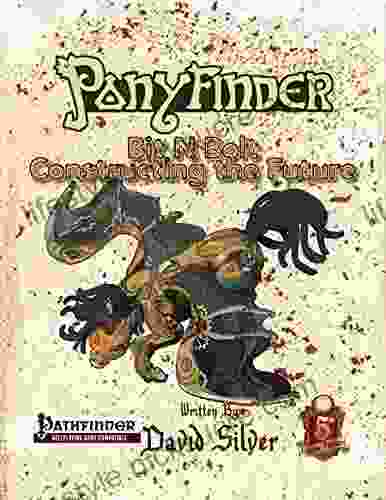
 John Dos PassosPonyfinder Bit Bolt Constructing the Future: A Comprehensive Analysis of...
John Dos PassosPonyfinder Bit Bolt Constructing the Future: A Comprehensive Analysis of... Jason ReedFollow ·13.4k
Jason ReedFollow ·13.4k Jaden CoxFollow ·16.1k
Jaden CoxFollow ·16.1k William FaulknerFollow ·12.1k
William FaulknerFollow ·12.1k Arthur MasonFollow ·10.8k
Arthur MasonFollow ·10.8k Benjamin StoneFollow ·11.2k
Benjamin StoneFollow ·11.2k Enrique BlairFollow ·3.7k
Enrique BlairFollow ·3.7k Jackson HayesFollow ·13.1k
Jackson HayesFollow ·13.1k Ted SimmonsFollow ·18.9k
Ted SimmonsFollow ·18.9k

 Ira Cox
Ira CoxUnveiling the Hidden Gem: Moon, Virginia - A Washington...
Nestled within the picturesque...

 Jorge Luis Borges
Jorge Luis BorgesThe Ultimate Survivalist's Medical Guide: A Comprehensive...
In the realm of...

 Henry Green
Henry GreenDavid Douglas: Exploring the Natural History of the...
David Douglas was a...
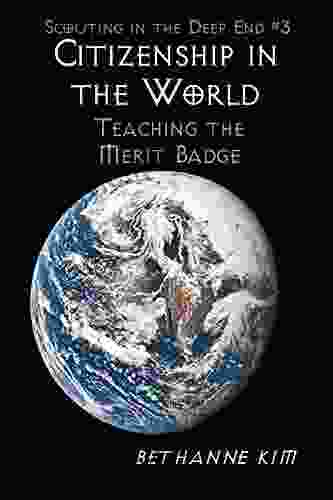
 Eric Hayes
Eric HayesUnderstanding Citizenship in a Globalized World: A...
Citizenship is a complex and multifaceted...

 Will Ward
Will WardUnveiling Research Real Talk: Navigating the Labyrinth of...
Research, the...
4.1 out of 5
| Language | : | English |
| File size | : | 21913 KB |
| Print length | : | 144 pages |
| Lending | : | Enabled |
| Screen Reader | : | Supported |


